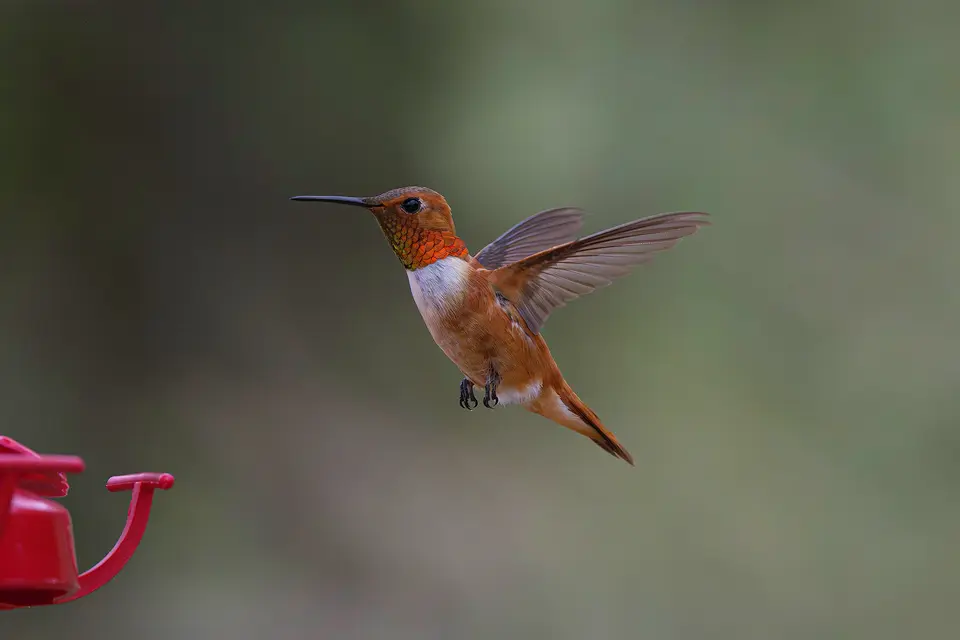Rufous hummingbirds are wintering in Houston — and they're hungry
By Gary Clark,CorrespondentJan 20, 2024

Adult male rufous hummingbirds have fiery-orange throats and can visit Houston area yards in the winter. Photo Credit: Kathy Adams Clark Restricted use.Kathy Adams Clark/Kathy Adams Clark/KAC Productions
Two rufous hummingbirds hailing from breeding grounds in the Pacific Northwest have been gulping down sugar water from our hummingbird feeders since late August.
I have no idea where they bred last spring, but I do know the plump little hummers with rufous, or reddish-orange, color on their backs and sides breed in the Pacific Northwest as far as 61 degrees North latitude.
That means our rufous hummers could have flown here from Wittier, Alaska! Or maybe they came from Washington state or Oregon. Whatever the case, they left their breeding grounds in late summer.
Article continues below this ad
They migrated down the Rocky Mountain meadows — snapping up insects, like midges and flies, to maintain body fat on their southbound journey. They recharged their high-octane energy from nectar-producing flowers, like red columbines and Rocky Mountain bee plants, that blanket their mountain highway during late summer.
Many rufous hummers migrate to the Davis and Big Bend Mountains in West Texas. Precisely where they go next is a bit controversial. Conventional ideas are that they travel down to Mexico, where some birds loop up to the Texas coast, on to Louisiana, and even up the Eastern Seaboard.
Many people in Houston-area neighborhoods welcome a rufous hummer to their yards every year. A few people have been lucky to see other western hummers, such as a Calliope or Allen's hummingbird, rare winter visitors in local neighborhoods.
Rufous hummingbirds
- Rufous hummingbirds are annual winter residents in Houston neighborhoods.
- They have varying amounts of reddish orange on the face and body; adult males usually have fiery-orange throats and females have a grayish throat, green back and ruddy sides.
- They typically prefer wooded neighborhoods with nectar-producing plants and hummingbird feeders.
- They’re fiercely aggressive at hummingbird feeders, even chasing off songbirds.
- During freezing nighttime temperatures, rufous hummers go into deep torpor, during which their heart rate, breathing rate and metabolism slow down dramatically.
- The little hummingbird come out of torpor by dawn and are perky and hungry.
Distinguishing an Allen's hummingbird from a similarly plumaged rufous hummingbird is difficult. Chances favor a rufous hummingbird because it’s the most likely western hummer during winter.
Want to help the hummingbirds? Keep hummingbird feeders hanging outside and filled with fresh sugar water that resembles flower nectar; it's vital to a hummer's energy. A garden of shrimp plants, like we have, will supply natural nectar for wintering hummingbirds.
Fortunately, any hummer visiting Houston's subtropical region during winter will maintain adequate body fat by feeding on our abundance of year-round insects.
We first saw a male rufous hummingbird at our feeders on Sept. 3, 2012. Because of site fidelity in rufous hummers, we suspect the same male showed up for several years. We've also welcomed another male, a juvenile, and a female to our yard every year since 2013.
They normally head back to northwestern breeding grounds in late February or March.
chron.com |





